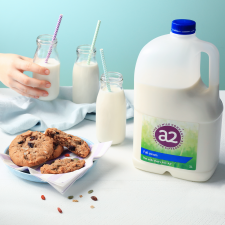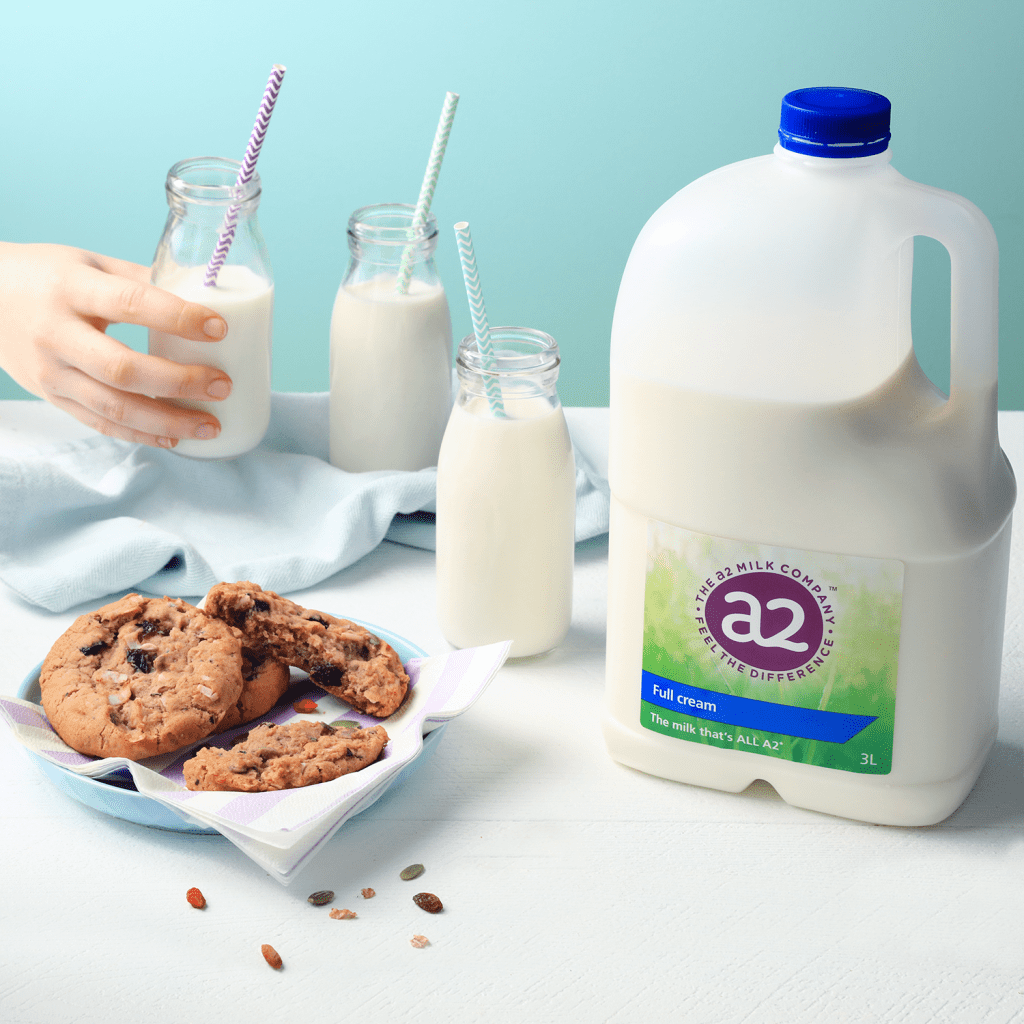 After nearly a decade, the ‘milk war’ between the major supermarkets is finally showing signs of coming to an end.
After nearly a decade, the ‘milk war’ between the major supermarkets is finally showing signs of coming to an end.
Both Coles and Aldi recently announced they were to follow the lead of Woolworths by abandoning their $1-a-litre milk and increase the price by 10%. The move will no doubt bring huge relief to the nation’s beleaguered dairy farmers and, to a lesser extent, convenience store operators.
White milk has long been one of the staple convenience store products. It is traditionally a huge foot traffic driver. When the milk war began in January 2011, the fear was that forgetful customers would no longer be quite as willing to swallow the inevitably larger price differential between the channels in order to get their emergency milk from their local convenience store.
In the event, the worst fears of convenience store operators largely failed to materialise. Through a combination of clever category management and by being prepared to make some adjustments to pricing, stores reduced the impact of the supermarket price war. Customers showed themselves largely willing to pay a slight premium to ensure they could get milk for their children’s morning cereal as quickly as possible.
Research shows milk shoppers choose convenience stores because ‘it’s closer to my house’, ‘it’s quicker than a supermarket’ and ‘it’s an emergency and all that I need is milk’.
Nonetheless, the thawing of the supermarket milk war will still be seen as positive news in convenience circles. The importance of the category in the channel is difficult to overstate.
According to Convenience Measures Australia, the white milk shopper has 30% more items in the basket versus the average shopper, and is strongly skewed towards a top-up shop at 65% versus overall average of 9%.
The most recent state of the industry report from the Australasian Association of Convenience Stores (AACS) says that milk is a natural basket addition for those embracing a ‘little and often’ approach to pantry replenishment.
White milk sales in Australia are dominated by Parmalat, which is responsible for the Pauls brand; and Lion, which boasts the Dairy Farmers and Pura brands.
To maximise category sales, it pays for retailers to stock a variety of products with options across pack sizes, fat types and product functionality. It is important that a consumer can find the particular brand they are loyal to, or wish to purchase, at any time of the day. Research showed that many shoppers would rather walk away and go to another store if they can’t find their regular milk.
Customers want reliability and assurance when purchasing white milk, and so the right range meeting the needs and tastes of the customers should be the highest priority.
Marker research company Euromonitor International reports that full fat fresh milk is continuing to gain popularity in Australia as consumers increasingly move away from fat-free and semi skimmed varieties. The AACS attributes this renaissance of full fat dairy to a wider shift back to real, whole foods.
In its state of the industry report, the association says this trend is best illustrated by the extremely strong performance of the Pauls Farmhouse Gold brand in both grocery and convenience. According to the report, full cream milk accounts for a 70% dollar share of sales through convenience, with reduced fat milk accounting for 26%.
With an extra creamy texture and flavour, Farmhouse Gold highlights the resilience of full cream milk and the willingness of customers to sometimes embrace higher priced branded items.
Another brand seeking to differentiate itself is a2 Milk which claims to be the only fresh milk that comes from cows handpicked to naturally produce only the A2 protein, and no A1 protein.
The company says a2 milk is popular with many consumers who enjoy the quality, taste and benefit, and who are not price sensitive in the dairy cabinet. It says that all conventional cows’ milk contains a mixture of the A1 and A2 proteins, and many people who have made the switch from conventional cow’s milk to a2 Milk say that they can feel the difference.
a2’s marketing manager liquid milk Jane Staska said: “We believe the typical C-store operator should have an a2 Milk offering within the white milk category to meet the increased demand from consumers for a wider range of options within this important category”.
“It is important that shoppers do not gain the perception that convenience stores will not have a2 Milk as our consumer insights tell us that a2 Milk purchasers are very brand loyal with almost 30% visiting another store to purchase if out-of-stock,” Ms Staska said.
The company says that while the scale of the grocery channel has been important in developing the success of a2 Milk, the convenience channel will be a key focus to continue the brand’s future growth and distribution reach.
“We see the C-Store market as an important strategic channel to continue to grow the a2 Milk customer base,” said Ms Staska. “C-Store customers purchase a2 Milk based on need and the traditional top up shop.”
As well as stocking the right range, convenience store operators also need to focus on other aspects of category management in order to maximise the opportunity represented by white milk.
Having the fridge in a highly visible location is important to remind shoppers to purchase, and clever Point of Sale material and category promotion can help capture impulse purchases.
Keeping stock levels up is critical. There is no substitute for milk. If it is out of stock, retailers will lose sales. Therefore ensuring fridges are replenished frequently and fast moving products are given adequate facings to ensure there is still stock in peak times are obvious that ways retailers can avoid lost sales.
There are often a lot of brands and a lot of choices in a milk fridge, so grouping similar brands, segments or sizes with clear signage will help customers shop the category efficiently. Ensuring brands have best positioning at eye level will also assist in growing category value.
Another proven sales driver is to bundle white milk with other ‘staple’ products such as bread. This presents the customer with an appealing value offer and increases their overall basket size.
In terms of pack size, two litres continues to be the dominant size for the white milk category, being the perfect size for family households.
While the category has faced its share of challenges through convenience in recent years, the importance of white milk as a foot traffic driver and profit generator has remained constant … and looks set to do so long into the future.
* Convenience and Impulse Retailing would like to thank Parmalat, a2 Milk, Vitasoy, Convenience Measure Australia, and Euromonitor International for supplying information for this article.
AT A GLANCE
- The white milk shopper has 30% more items in the basket versus the average shopper, and is strongly skewed towards a top-up shop at 65% versus overall average of 9%
- Full fat fresh milk is continuing to gain popularity as consumers increasingly move away from fat-free and semi skimmed varieties as part of a wider shift back to real, whole foods.
- Bundling white milk with other ‘staple’ products such as bread is a proven sales driver as it presents the customer with an appealing value offer and increases their overall basket size.
- While plant milk retail sales exceed $311M annually in grocery and are growing at 10.7%, sales though convenience sales are just $1M per annum indicating a lot of untapped potential in the channel.
<heading> BREAKOUT
While milk remains at the very heart of convenience store profitability, there are signs that consumers are increasingly beginning to look at non-dairy alternatives.
Whether it be due to health reasons such as lactose intolerance or for concerns over animal welfare, plant based milk is rapidly growing in popularity. Given the space restrictions faced by most convenience stores, the emerging segment is still far more prominent in grocery … but that could be about to change.
Aztec data shows that in grocery, plant milk retail sales exceed $311M annually and are growing at 10.7%. By contrast, convenience sales are just $1M per annum.
Companies such as Vitasoy, which produce products such as soy milk and almond milk which already sell well in supermarkets, are convinced there is plenty of untapped potential in convenience.
Vitasoy Managing Director Chris Gillard said: “We believe there is considerable growth still to come for the category generally but, more specifically, within convenience which is coming off a very low base”.
“Consumers who enjoy plant-based milk are typically adding it to their dairy consumption rather than replacing dairy, which means overall purchase and consumption is increasing,” Mr Gillard said.
Interestingly, Vitasoy says flavoured plant milk is the largest segment of plant milk in convenience and it recently launched Vitasoy Whole range – a flavoured range of plant milks in a 330mL PET bottle – in an effort to capitalise on the trend.
“Generally, consumption of non-dairy milks seems to be driven by consumers who love flavoured milk but are monitoring how much dairy they consume,” said Mr Gillard.
“Vitasoy Whole allows these consumers to enjoy more flavoured milk consumption because it is seen by these people as a healthy option with the goodness of plants.”
Consumer choice and range is then really important for the convenience sector as it moves to compete with grocery as a destination for everyday purchases. This could include stocking a good variety of plant-based milks for a range of consumption occasions. The category’s growth and prevalence in Australia’s changing dietary choices means it will become increasingly important for convenience to stock it, or miss a potential opportunity for growth.
Vitasoy says that while many people think that plant-based milk is a niche category, the reality is that more than 35% of Australian households have bought the category in the last year.
“Plant-based milks are rapidly entering the mainstream, so it makes sense to us that they are merchandised prominently and in the higher traffic areas,” said Mr Gillard. “With the emergence of ready to drink flavoured variants and increased consumer interest, we believe plant-based milks will become an important sales contributor for convenience, if they are provided with prominent positioning in high traffic store areas.”

